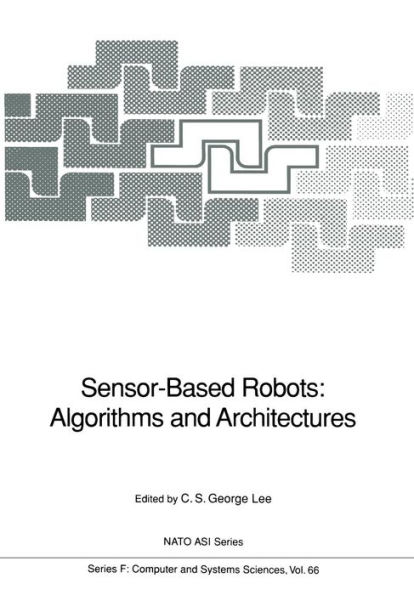Sensor-Based Robots: Algorithms and Architectures
Most industrial robots today have little or no sensory capability. Feedback is limited to information about joint positions, combined with a few interlock and timing signals. These robots can function only in an environment where the objects to be manipulated are precisely located in the proper position for the robot to grasp (i. e. , in a structured environment). For many present industrial applications, this level of performance has been adequate. With the increasing demand for high performance sensor-based robot manipulators in assembly tasks, meeting this demand and challenge can only be achieved through the consideration of: 1) efficient acquisition and processing of intemaVextemal sensory information, 2) utilization and integration of sensory information from various sensors (tactile, force, and vision) to acquire knowledge in a changing environment, 3) exploitation of inherent robotic parallel algorithms and efficient VLSI architectures for robotic computations, and finally 4) system integration into a working and functioning robotic system. This is the intent of the Workshop on Sensor-Based Robots: Algorithms and Architectures - to study the fundamental research issues and problems associated with sensor-based robot manipulators and to propose approaches and solutions from various viewpoints in improving present day robot manipula tors in the areas of sensor fusion and integration, sensory information processing, and parallel algorithms and architectures for robotic computations.
1116787782
Sensor-Based Robots: Algorithms and Architectures
Most industrial robots today have little or no sensory capability. Feedback is limited to information about joint positions, combined with a few interlock and timing signals. These robots can function only in an environment where the objects to be manipulated are precisely located in the proper position for the robot to grasp (i. e. , in a structured environment). For many present industrial applications, this level of performance has been adequate. With the increasing demand for high performance sensor-based robot manipulators in assembly tasks, meeting this demand and challenge can only be achieved through the consideration of: 1) efficient acquisition and processing of intemaVextemal sensory information, 2) utilization and integration of sensory information from various sensors (tactile, force, and vision) to acquire knowledge in a changing environment, 3) exploitation of inherent robotic parallel algorithms and efficient VLSI architectures for robotic computations, and finally 4) system integration into a working and functioning robotic system. This is the intent of the Workshop on Sensor-Based Robots: Algorithms and Architectures - to study the fundamental research issues and problems associated with sensor-based robot manipulators and to propose approaches and solutions from various viewpoints in improving present day robot manipula tors in the areas of sensor fusion and integration, sensory information processing, and parallel algorithms and architectures for robotic computations.
109.99
In Stock
5
1

Sensor-Based Robots: Algorithms and Architectures
285
Sensor-Based Robots: Algorithms and Architectures
285Paperback(Softcover reprint of the original 1st ed. 1991)
$109.99
109.99
In Stock

Product Details
| ISBN-13: | 9783642755323 |
|---|---|
| Publisher: | Springer Berlin Heidelberg |
| Publication date: | 12/13/2011 |
| Series: | NATO ASI Subseries F: , #66 |
| Edition description: | Softcover reprint of the original 1st ed. 1991 |
| Pages: | 285 |
| Product dimensions: | 6.69(w) x 9.53(h) x 0.03(d) |
From the B&N Reads Blog
